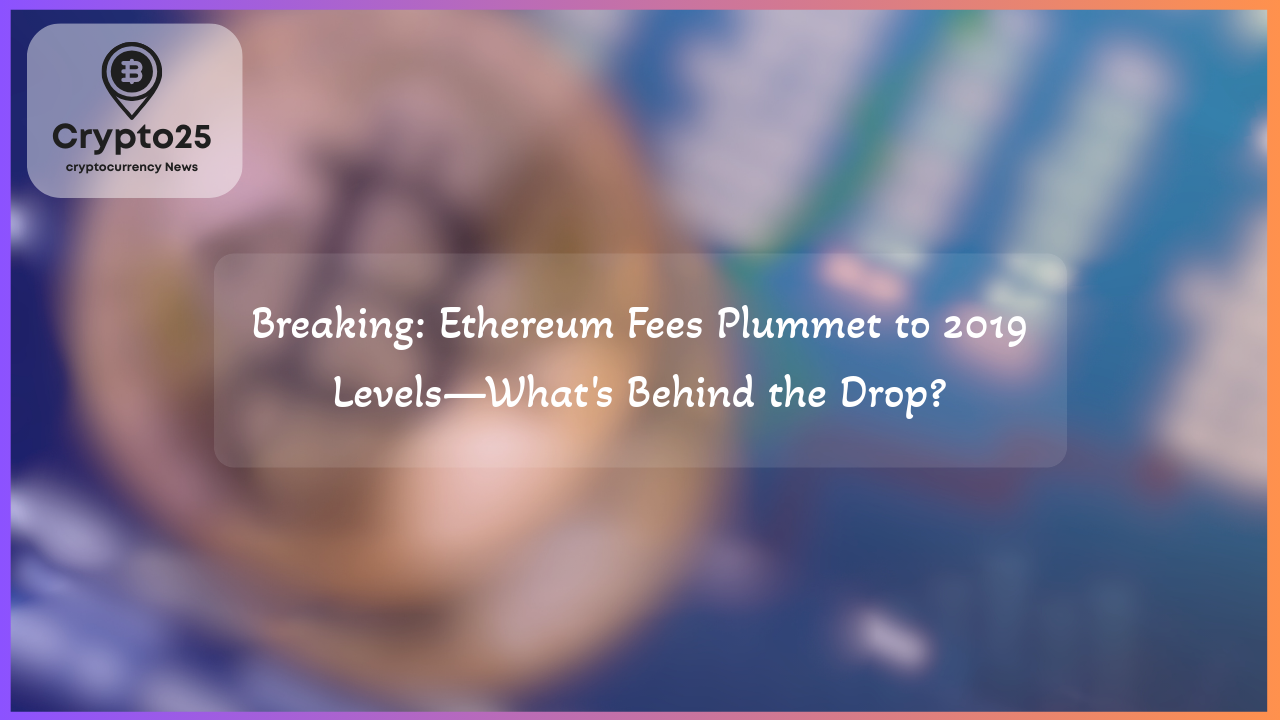
Ethereum transaction fees have reached their lowest point in five years, a milestone reflecting reduced activity across the network. According to Santiment, an on-chain analytics platform, the decline coincides with economic uncertainty, pushing users to sideline network engagement. From smaller individual transfers to decreased usage of smart contracts, this trend highlights both challenges and opportunities for Ethereum as it undergoes major technical transformations.
### Ethereum Transaction Fees Hit 5-Year Lows
The cost of processing transactions on the Ethereum network has fallen to just $0.168, marking the cheapest average fee since May 2020. This decline mirrors a decrease in transaction volume and overall activity on the blockchain. Santiment officials and crypto analysts suggest that low fees often signal hesitation among market participants. Concerns over global economic conditions have cooled the once-bustling Ethereum ecosystem, leaving traders and users cautious about allocating resources.
Historically, such drops in transaction fees have foreshadowed price recoveries in Ethereum’s value. However, current market dynamics complicate predictions. Rising global inflation, fluctuating commodity prices, and external geopolitical forces seem to be undermining confidence, keeping traders on the sidelines. Ethereum proponents are closely watching these trends, hoping for a reversal that combines moderate fees with increased activity levels.
| Title | Details |
|---|---|
| Market Cap | $1.2 Trillion |
### Ethereum’s Pectra Upgrade: A Catalyst for Change?
The upcoming Pectra upgrade, scheduled for a highly anticipated launch on May 7, could bring significant advancements to Ethereum’s network. Among its planned improvements is the doubling of layer-2 blob capacity, which means the blockchain will be better equipped to handle higher transaction loads with reduced congestion. Another key feature includes a cut in transaction fees, offering users more cost-effective ways to interact with the network. The upgrade also introduces the ability to pay fees using stablecoins such as USDC or DAI, a feature geared toward improving usability.
In addition to these efficiencies, the Pectra upgrade significantly raises Ethereum’s staking limits. Currently capped at 32 ETH, the new ceiling will allow validators to stake up to 2,048 ETH. This change is designed to encourage more institutional participation in securing the blockchain. Enhancements like these aim to attract both new and existing users, potentially rehabilitating Ethereum’s reputation as the ultimate smart contract platform. A second phase, expected in late 2025 or early 2026, will further streamline data storage and enhance node verification processes.
Despite these major technological improvements, the rollout has not been free of challenges. Delays in configuration settings and testnet disruptions caused by unexpected attackers have slowed progress, leaving some wondering whether the industry’s expectations for Ethereum are too high.
### Long-Term Ethereum Holders Make Surprising Moves
Interestingly, long-term Ethereum holders appear to be offloading portions of their holdings amid the current market downturn. A striking example came to light when Lookonchain revealed that one significant holder sold their 1,160 ETH at a price of $1,580, sustaining a loss of over $2.6 million from their original investment. This move signals waning confidence even among the network’s most loyal investors, hinting at broader market dissatisfaction.
Analysts are divided on the implications of these trades. While some view them as a precursor to larger sell-offs, potentially driving prices even lower, others argue that selling pressure could pave the way for market stabilization. Given Ethereum’s slump—an 11% price decline in just two weeks—it’s unclear whether a recovery will materialize soon.
The nervous sentiment coincides with drastically low network utilization, but optimism surrounding Ethereum upgrades adds a layer of complexity. Brian Quinlivan from Santiment opined that reduced retail interest, combined with advancements like Pectra, could create conditions for a rebound when market confidence eventually returns. For now, Ethereum trades just below $1,600, a sharp decline from its former highs, leaving traders and developers to determine its next trajectory.
### Conclusion: Balancing Uncertainty and Innovation
Ethereum stands at a pivotal moment in its evolution. Record-low transaction fees and diminished user activity underline broader market unease, while transformative upgrades like Pectra promise to reshape its infrastructure for better scalability, cost efficiency, and user experience. Whether reduced fees signify an impending price recovery or prolonged stagnation remains uncertain, but Ethereum’s resilience will likely mark this as a crucial chapter in its blockchain journey.
